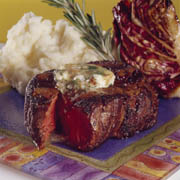Ingredient Challenges: Nutrient Density Index

A refreshing twist on improving people's diets is gaining momentum. This nutritional guidance puts maximum nutrients per calorie center stage instead of holding a continuous spotlight on calories, carbs or fat control for weight management.
“Naturally Nutrient Rich”--an approach to counter an American diet that has become calorie-rich and nutrient-compromised--was presented at the American Dietetic Association Food & Nutrition Conference & Expo held in Anaheim, Calif. in October 2004. It explained the science behind a new nutrient density index that ranks foods by nutritional value, and encourages nutrient-dense natural whole food selections. This framework is about getting the most nutrients for the least calories, ultimately for healthful weight loss and maintenance.
A goal of the Naturally Nutrient Rich effort is to gain a consensus on how to measure and assess the nutrient density of individual foods for a nutritional value-ranking index. Nutrients per calorie or calories per nutrient are two possible ways to achieve this. Adam Drewnowski, Ph.D., director, Center for Public Health Nutrition, University of Washington (Seattle), presented a “nutrient per calories” scoring method he developed collaboratively, based on the mean percent daily value from 14 nutrients. Percent daily values for protein, thiamin, riboflavin, vitamin C, vitamin A (retinol), vitamin D, vitamin E, monounsaturated fat, calcium, potassium, iron, zinc, vitamin B12 and folate are calculated based on 2,000 calories of each food, then summed and divided by 14 to arrive at the nutrient-per-calorie score of the food. Stellar foods from each basic group in this system include brown rice, spinach, avocado, low-fat milk and beef steak.
The calories per nutrient approach (which represents a caloric nutrient ratio) is modeled after a method developed by Paul LaChance, Ph.D., in 1986. Percent daily values for the 14 nutrients are calculated per 100g of food; these are summed and divided by 14. The score results when calories per gram of food are divided by the mean percent daily value. This score is more telling of how many calories are provided per nutrient--skim milk provides the fewest while ice cream has the most.
“Naturally Nutrient Rich” had its initial kick-off campaign, “Putting More Power on Americans' Plates,” during March in Washington. Hosted by the University of Washington, Rutgers University and the American Society for Clinical Nutrition, the symposium was held in association with the Nutrition Education for the Public, Food & Culinary Professionals and American Dietetic Association practice groups, and supported by trade associations representing all nutrient-bearing food groups--the Florida Department of Citrus, California Tomato Commission, Wheat Foods Council, National Pork Board, California Strawberry Commission, National Cattlemen's Beef Association, Wild Blueberry Association of North America, California Avocado Commission National Dairy Council, Egg Nutrition Center, U.S. Potato Board and California Kiwifruit.
Links
Looking for a reprint of this article?
From high-res PDFs to custom plaques, order your copy today!


